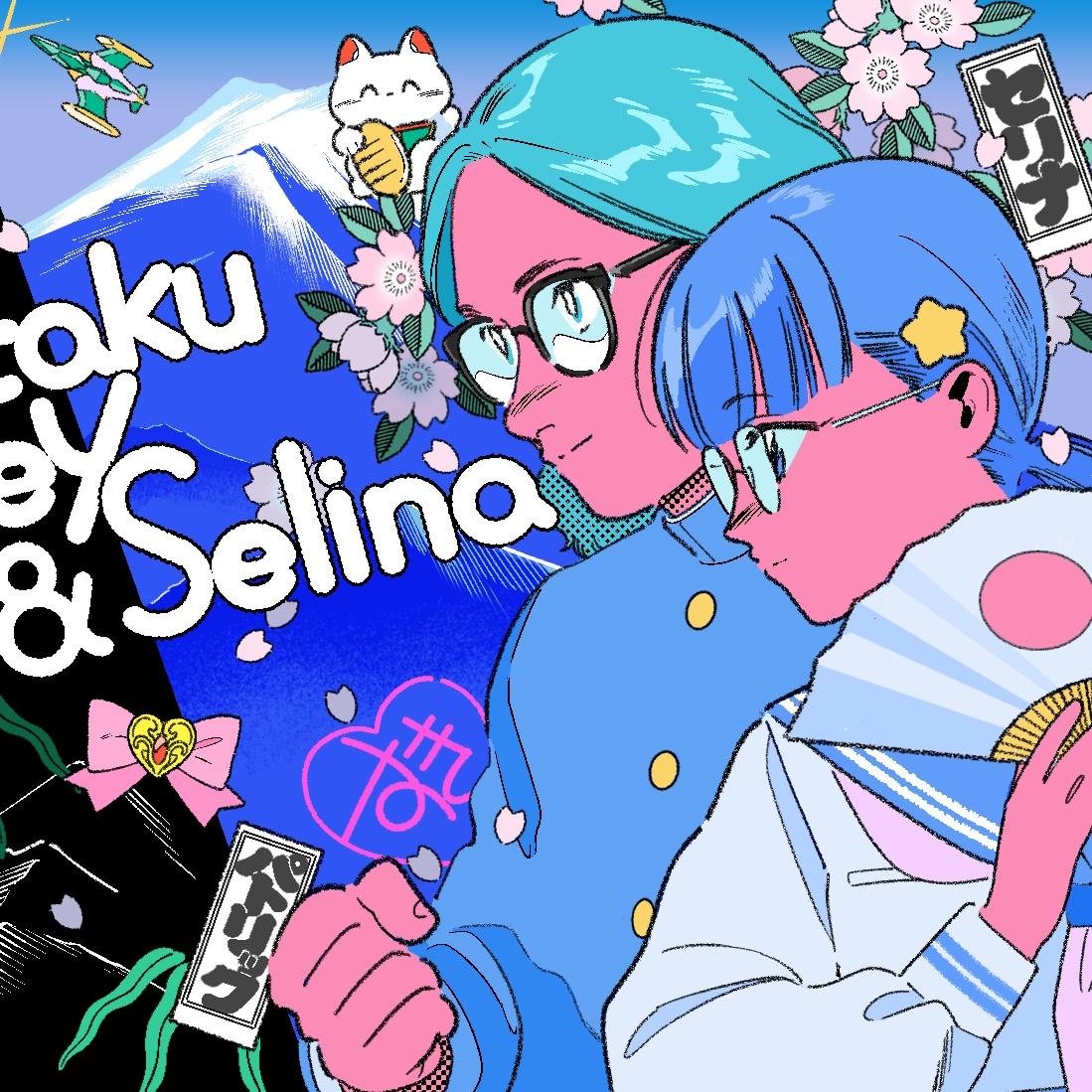Our Otaku Journey: Part I, Growing Up Otaku
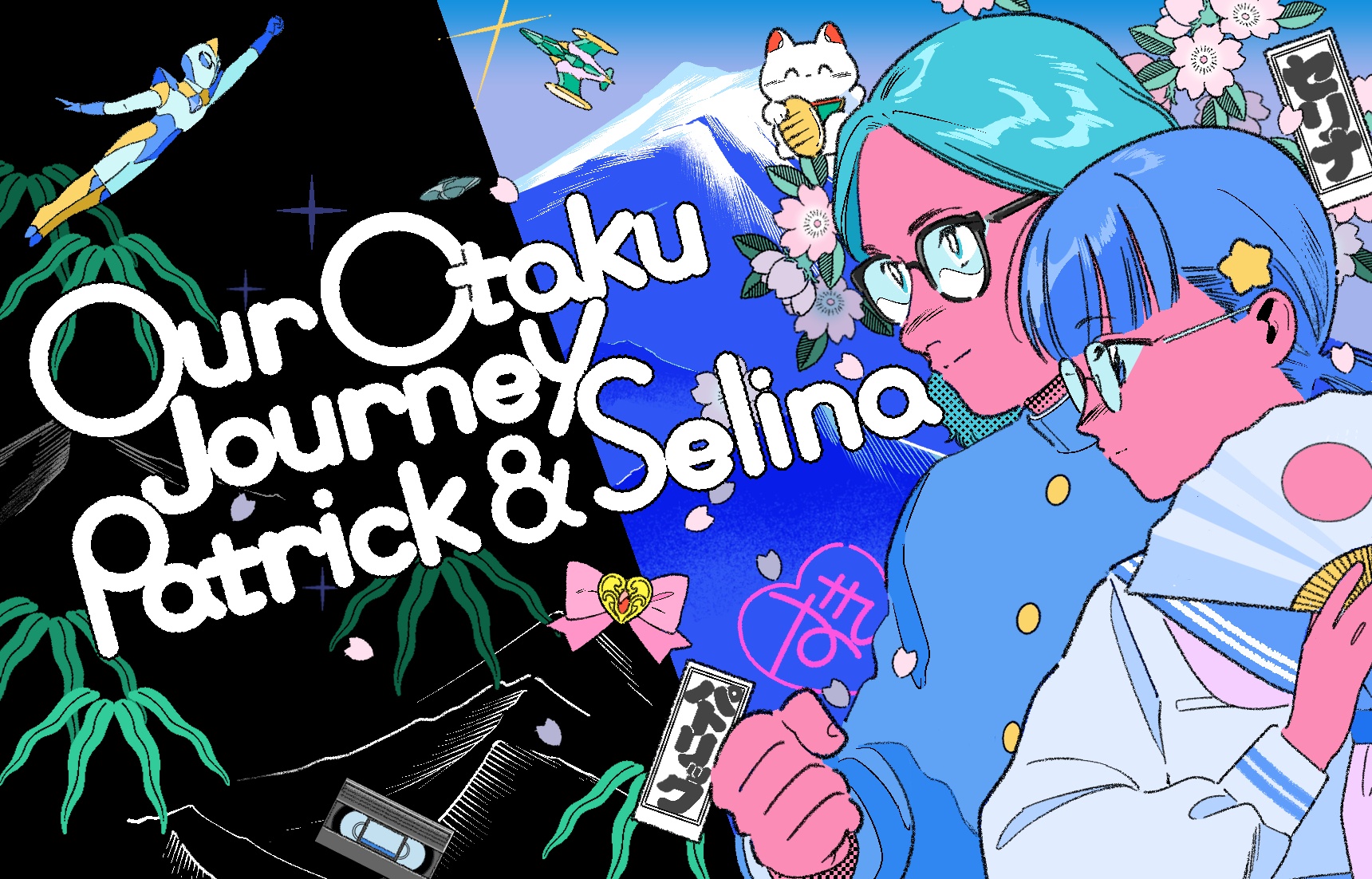
Welcome to the first in a series of conversations between two generations of otaku--Patrick Macias (Gen X) and Selina Lin (Gen Z). Our otaku share their experiences of growing up with the world of Japanese pop culture with anime like Bleach, Great Mazinger, Pokemon, and One Piece, and how it changed their lives.
By Patrick MaciasSelina Lin: Hi, Patrick! It’s so nice to meet someone from an older otaku generation!
Patrick Macias: Hi, nice to meet you, too, Selina! Yes, I’m an ancient 49 years old, originally from Sacramento, California. I moved to Tokyo four years ago, and now live in Meguro ward and… I love it here! What about you?
Selina: I’m 25 years old, born in Melbourne, Australia, and I’m now living in Kyoto . . . which is a lot of fun. I’m on the media team of Tokyo Otaku Mode, so I do a lot of writing, some translating, and I also manage social media.
Patrick: That makes us both professional otaku, I guess. I’ve been writing about anime and Japanese pop culture since the 1990s, and worked for companies like Viz, Crunchyroll, and Netflix. I’m the editor in chief of Otaku USA magazine and I’m working on a new book about anime for the American market. I also write fiction, including the original story for Urahara, an anime that came out in 2017. So let’s get into it, because I’m curious. What was the first anime you ever watched?
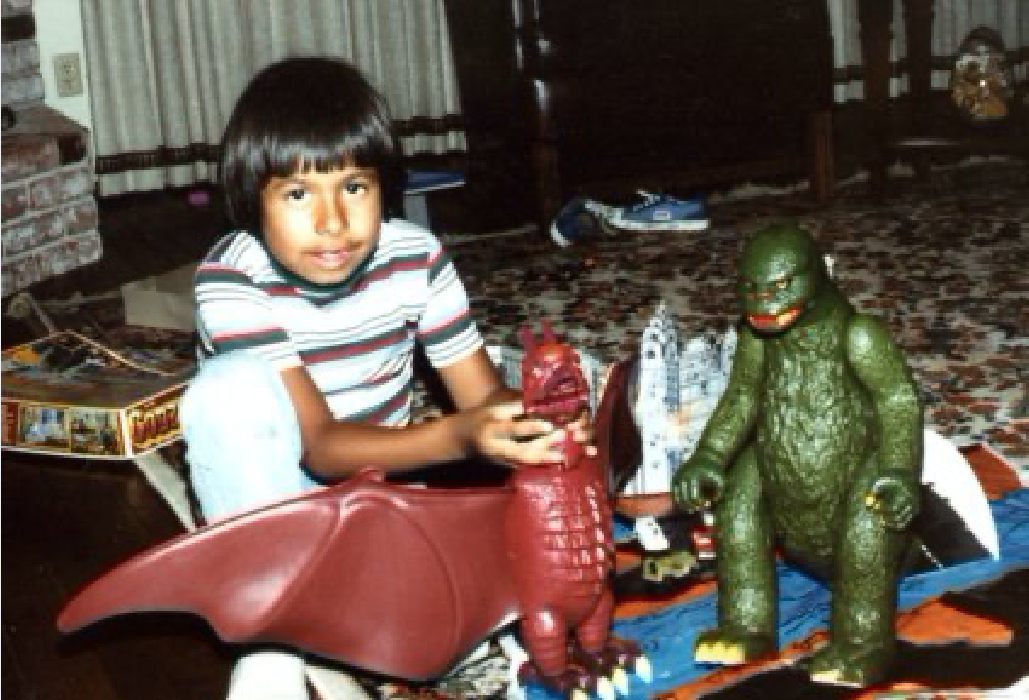
Patrick: I think this is either 1979 or 1980, so I would be about 7 or 8 years old. This is right when I began watching early anime like Gatchaman and Yamato. Yes, I am playing with my kaiju toys!
Selina: Pokémon, probably in the late 90s or early 2000s. I was too young, though, to be aware that it was anime or that it came from Japan. We had VHS tapes and I would watch them over and over.
Patrick: When did you discover that they were a Japanese creation?
Selina: When I saw Bleach in its original Japanese, subtitled in English. I was in 6th grade, 11 or 12 years old at the time. My sister was watching this new show and, since at that age, I did everything she did, so I started watching Bleach, too. She didn’t continue watching it for very long, but, for some reason, I did.
Selina: This was at an event called Armageddon! It was in Melbourne, Australia, in 2009, so I was about 12 years old then. I was cosplaying Senna from the movie "Bleach the Movie: Memories of Nobody."
Patrick: What got you hooked?
Selina: Bleach was mind blowing: the quality of the voice acting, the action, the unfamiliar language that everyone was speaking… it was an amazing experience. It really said to me, “this is anime!” How about you, Patrick? What was the first anime you saw?
Patrick: The first movie I ever remember seeing in the theater as a kid was the anime Jack and the Beanstalk (Jakku to Mame no Ki), which was a kids’ movie, dubbed in English and released in the U.S. in 1976. I can remember the experience clearly, even though I was probably about 3 years old at the time. Since it was the first movie I saw in the theater, it made a huge impression. I didn’t find out until many years later that it was made in Japan.
Selina: So when did you become aware of anime’s Japanese connection?
Patrick: A few years later, probably around 1978, I saw Science Ninja Team Gatchaman on TV. It was recut, and dubbed in English as Battle of the Planets. I still didn’t know it came from Japan, but it looked and felt very different from old U.S. cartoons like Bugs Bunny and Popeye. You could really feel the action and danger in Gatchaman. Even though I was only about 6 years old, I wanted more.
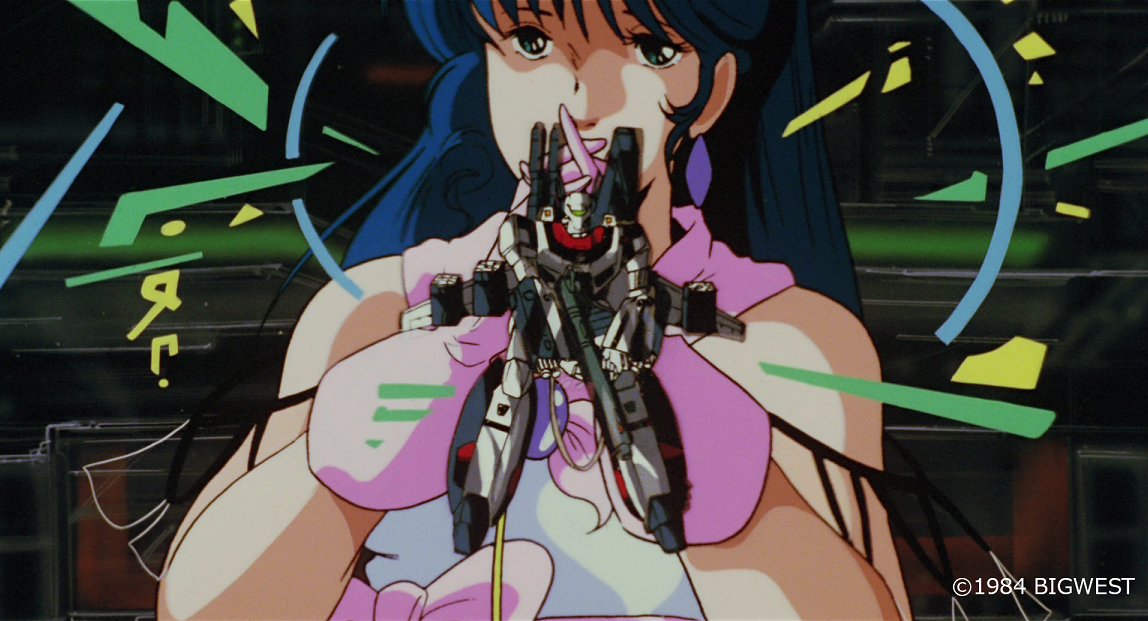
The Super Dimension Fortress MACROSS:Do You Remember Love? (1984)
Selina: Was it easy to find anime back in those prehistoric times?
Patrick: Okay, you’re right . . . it was the pre-internet age, but a wave of interest in Japan was happening around that time. Japanese robot toys, based on anime like Great Mazinger and Getta Robo G, were really popular. The toys were branded as “The Shogun Warriors” and it was clear, even to us kids, that they came from Japan. There were hints that something big was happening in Japan, but it was hard to get real anime and manga. I just kept my eyes open for it. What was your next step after becoming a fan of Bleach?
Selina: By that time, of course, my generation had YouTube. I mostly got my anime from fan-subbed episodes, which were usually split into 3 or 4 separate videos. I mostly got my anime through the internet because, to be honest, DVDs were very expensive.
Patrick: My early anime experiences were all analog. When I was around 13 years old, I found a Japanese video store in my hometown that rented out the latest anime VHS tapes. There were no subtitles or English dubs, but I didn’t care. In a short amount of time I saw lots of things like The Super Dimension Fortress Macross: Do You Remember Love ? (1984), Megazone 23 (1985), and Vampire Hunter D (1985). They’d get new tapes all the time, so I would go nearly every weekend.
Selina: And this was a thing for most American kids?
Patrick: Actually, I didn’t have any friends at my school who liked anime. Then I started taking Japanese language classes at a local Buddhist temple. A few of the other students were anime fans like me, and had connections to bigger fan groups and networks. Through them, I found out that there was an anime club in my city: someone would actually open up their house once a month to fans who would sit around and watch anime.
Selina: Sounds like quite the underground scene.
Patrick: Anime fandom grew by word of mouth, and it was pretty strong in California. It had roots in the science fiction and Star Trek convention scenes. But anime fans were seen as real outsiders. Here we were watching cartoons in a language we didn’t even understand! Even the nerds and geeks thought we were weird.

An image from the new animation series BLEACH: Thousand-Year Blood War, scheduled to premiere in October 2022. ©久保帯人/集英社・テレビ東京・dentsu・ぴえろ
Selina: Fascinating! I never really felt any disapproval from anyone for liking anime. I guess I was lucky that my friends in middle school were also into anime. Our group was really into the Shonen Jump titles like Bleach, Naruto, One Piece, and Death Note. It was a small school, but many of the students were, like me, Chinese-Australian, so it was really natural to be into anime.
Patrick: So there was an Asian connection . . .
Selina: Then we started going into the city to attend anime events. Manifest was our first con and we were a bit nervous, especially since we were going in cosplay. But everyone was so welcoming. It felt like a safe space where you could express your interests and not have people judge you for it. That was my first experience with the wider anime fan community.
Patrick: For my generation, fan meetings were pretty much just watching anime. What other kinds of fan activities did you do?
Selina: Fandom-wise, going to events and doing cosplay. I have to give a big shoutout to my mom who did everything related to sewing. I cosplayed about 15-20 times, as characters like Rukia from Bleach and a character from Oreimo. I also tried fan subbing a little bit, but never took it too seriously. That was my first real experience with translating which may have helped lead me to where I am now.
Patrick: Wow, you’re so brave! I never had the guts to do cosplay (laughs). But if I had to, I would probably want to cosplay as Space Pirate Captain Harlock. He has the coolest outfit in anime.
"The freedom of expression in the best anime or manga lets creators tell a story with no compromises."
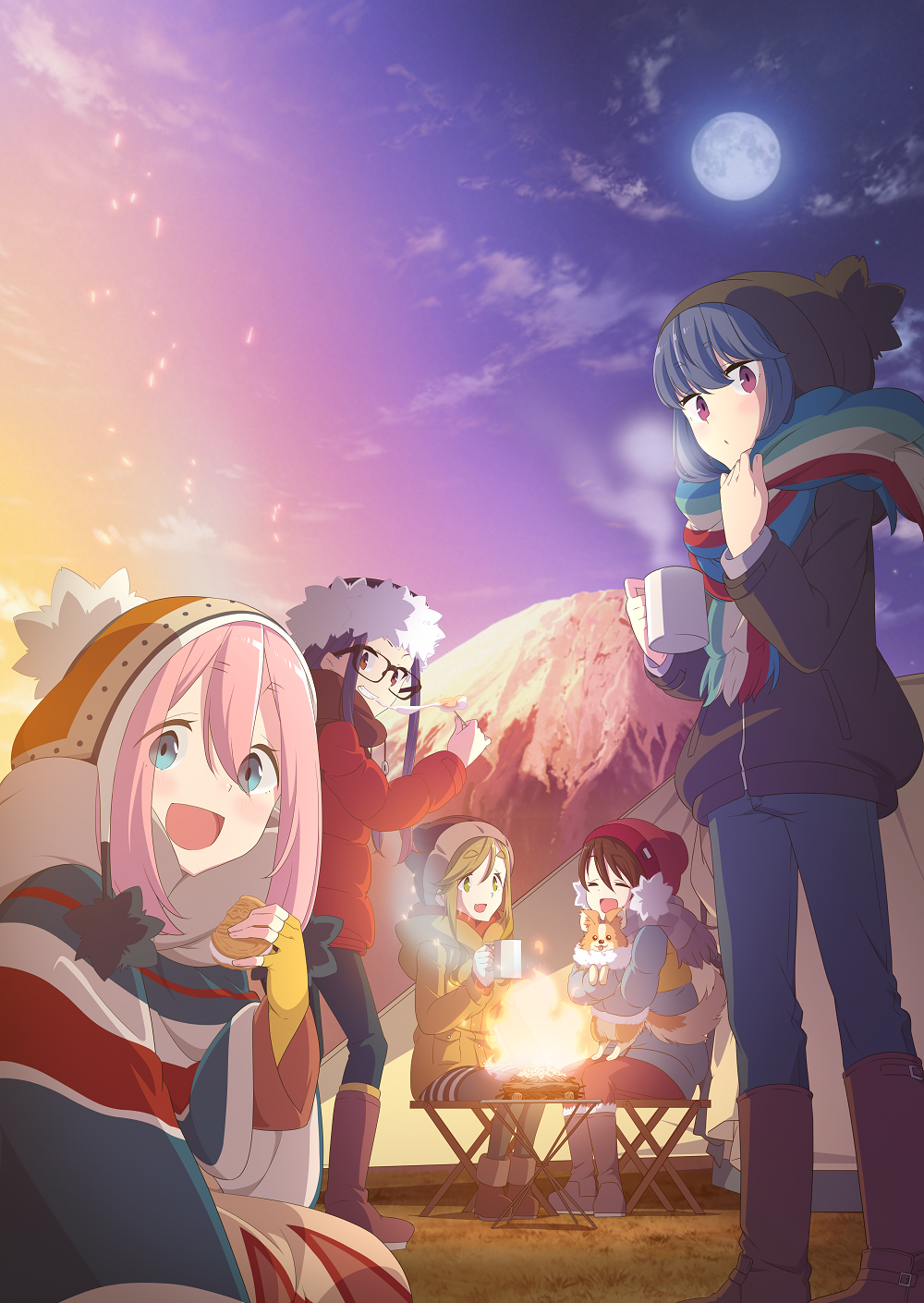
An image from "Laid-Back Camp" © あfろ・芳文社/野外活動サークル
Selina: It seems like being an anime fan during your generation was a little bit uncool. Kind of like the way otaku were viewed negatively in Japan during the 1980s, because of some high-profile crimes associated with anime. Now there’s really nothing particularly negative about being otaku.
Patrick: In America, it’s definitely gone from nerd to cool. Generations of kids are anime fans and they don’t want to let it go. Being a geek in America now is so mainstream. It’s totally normal to be a fan of Marvel superheroes or Star Wars, so anime doesn’t seem as strange as it once did. Also, there’ve been so many global hits now from Dragon Ball to Demon Slayer, showing that anime is not just some cult phenomenon.
Selina: I agree! Some people who grew up liking anime are now famous athletes and musicians who show their love in public. Recently, Lil Nas X wore an outfit inspired by Gilgamesh to the Met Gala. It’s really refreshing. It’s easy now to like anime because you like anime without any irony or prejudice. So why is anime so popular all over the world?
Patrick: Because there’s something for everyone. No matter what your interest is, there’s probably an anime or manga that you can enjoy, even if it’s about topics like camping (Laid-Back Camp) or men’s ice-skating (Yuri!!! on Ice).
Selina: That’s so true!
Patrick: Also, the freedom of expression in the best anime or manga lets creators tell a story with no compromises. When I first saw Space Battleship Yamato on TV as a kid, I’d never seen characters die or have adult relationships in animation before. But that’s totally normal in anime. Japan showed the world that you can use animation to tell stories with real emotion and real consequences. It’s not just kid’s stuff!
Selina: Exactly! The fighting in Bleach is probably one of the main reasons the show struck a chord with me. There are lots of comedic scenes, and there’s great voice acting, but I hadn’t seen much action in animated form before then. It had all these different elements—the daily school life of the characters (which I could relate to because I was roughly the same age although the setting was different); the comedic scenes between the characters; the battles. That might not be special in anime these days, but it seemed very new back then.
"Studying Japanese pushed me to keep watching anime, since it was very rewarding to understand without the subtitles."
Patrick: What keeps you interested in anime?
Selina: Where I grew up, there was a strong Asian community and a lot of anime fans, so it was easy to keep my interest alive. Studying Japanese also pushed me to keep watching anime, since it was very rewarding to be able to understand without the subtitles. Eventually, I started studying in Japan so I fulfilled my otaku-ness by actually coming here. How about you?
Patrick: Luckily, for an old otaku like me, Japan is still making anime based on my old favorites like Gundam and Macross. Those stories are continuing and evolving, so I need to see what happens next! Meanwhile, every four months, there are dozens of new anime to check out. It’s impossible to keep up with all the new anime that comes out, but it’s also impossible to stay bored or lose interest.
Selina: This was so much fun! I feel like we are creating a bridge between different otaku generations! Next time we meet, shall we talk about what it’s like living in Japan?
Patrick: Sure! Sounds like fun! Talk to you then!
illustration by DenQ


